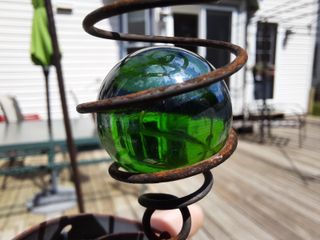Here’s the worst thing to happen to camera phones — and why it needs to stop
There’s a hot new trend among budget and mid-range phones. Device makers, looking to make their low-cost handsets stand out from the crowd, are equipping the back of their phones with multiple cameras. After all, the reasoning seems to be, the more lenses, the better. As a result, one of the go-to options for phone makers looking to bulk up the photographic capabilities of their new releases has been to slap a macro lens alongside the main shooter and other rear cameras.
And I wish to God that they would stop.
The last few phones I’ve reviewed for Tom’s Guide have all featured a macro lens among their array of cameras. The $699 OnePlus 8 offers a 2-megapixel macro lens alongside its main camera and ultra wide angle shooter. Two Motorola phones — the $249 Moto G Power and $299 Moto G Stylus — each have 2MP macro lenses of their own. So does the $249 TCL 10L, whose rear cameras include a main lens, an ultra wide angle shooter and a depth sensor.
And you know what? While I liked each of those phones to varying degrees, the macro lens on each of them was always one of the more disappointing features.
In practice, it would seem like there’s no harm in including a macro lens on a phone — particularly if we’re talking budget phones, which often have to do with fewer cameras than their pricier flagship counterparts. Phone makers turn to macro lenses because it adds another bullet point to the spec sheet — “Look at all the cameras this cheap phone has!” — while reserving telephoto lenses for premium handsets. As for users, a macro lens just gives you one more camera to play around with. What’s not to like?
I don’t doubt that there are plenty of people out there who might want to give a macro lens a try. But after looking at the results from macro lenses on multiple phones, I’m not sure why they’d ever come back to this feature.
This isn’t to single out one phone maker in particular: All the macro lenses I’ve tried out of late have produced sub-par images. The idea behind a macro lens is that you can get right up to an object — usually a flower or something stationary — and produce a detailed shot free of blur. In practice, though, I’m rarely able to produce a photo with any phone’s macro lens that I don’t immediately want to erase from my camera roll with extreme prejudice.

Consider this rogue’s gallery of images shot by different macro lenses over the last few months of smartphone reviews. The OnePlus 8’s macro shooter captured one of the better shots in my collection, really focusing in on the patterns in the petal of the purple tulip. And while the background blur in this example is used to stylish effect, the image is a little dark for my taste, and the other tulips in the flower arrangement get lost in the shuffle. This is a solid C effort, and yet it’s at the head of the class.

The macro lens on the Moto G Stylus produces better colors in this shot of a California poppy, but there’s a fuzziness around the edge of a flower. It could be that there was a mild breeze blowing when I took this shot. After all, any good photographer knows that you need to adjust your shots for… air.

Just to prove that it’s not just my clumsy fingers to blame for ho-hum macro lens shots, here’s one my colleague Adam Ismail took using the Samsung Galaxy A51. (Yes, it’s got a macro lens, too.) Adam thinks the $399 A51 has one of the better macro lenses on a mid-range phone, but the shot here is lackluster. The metal band around the marble is slightly out of focus, and the coloring of the background is a little off, particularly on the left side of the shot.

A sense of fairness compels me to share the one macro shot that I’ve taken over the last couple months that really justifies the inclusion of a macro lens. The Moto G Power’s macro camera did a really good job photographing this rose right after a rainstorm. The pink color on the rose is accurate, you can see the individual droplets of water and everything’s in sharp focus. It also happens to be the only picture out of eight I took of the same flower that I’m happy to show other people. A .125 batting average gets you shipped off to the minor leagues in baseball — it’s no better for smartphone cameras.
Somewhere, there must be a demand for macro lenses. The best iPhone lens kits that Tom’s Guide has tested include macro lenses, after all, so someone must find some use in this feature. I just doubt that many of them are buying inexpensive smartphones. And I certainly don’t think anyone who tries some of the macro lenses on the phones we’ve been reviewing lately will be eager to go back and use that capability regularly.
We’re trained, as consumers, to demand more from everything, especially when it’s a smartphone that can pack in a lot of features while still keeping the overall price from creeping upward. But sometimes, less is more, and it’s better to skip a feature altogether if the alternative is including one that doesn’t deliver what it promises, or ultimately proves to be of little value.
Google seems to understand this, at least if rumors about its upcoming smartphones are to be believed. With last year’s Pixel 4, Google introduced a Motion Sense feature where you use air gestures to control some elements of the phone. But that feature hasn’t proven to be very useful — I can’t remember the last time I used it on the Pixel 4 XL I keep handy — and now reportedly, Google is looking at ditching the sensor that supports it as a cost-saving move. The same goes for the Active Edge feature that allows you to summon the Google Assistant by squeezing the phone. I can’t remember the last time I launched that feature when it wasn’t by accident, and now reportedly Google may axe it from the upcoming Pixel 4a.
A feature that’s rarely used or poorly implemented benefits no one. Google seems to be figuring that out. I hope other phone makers do too when it comes to macro lenses.


